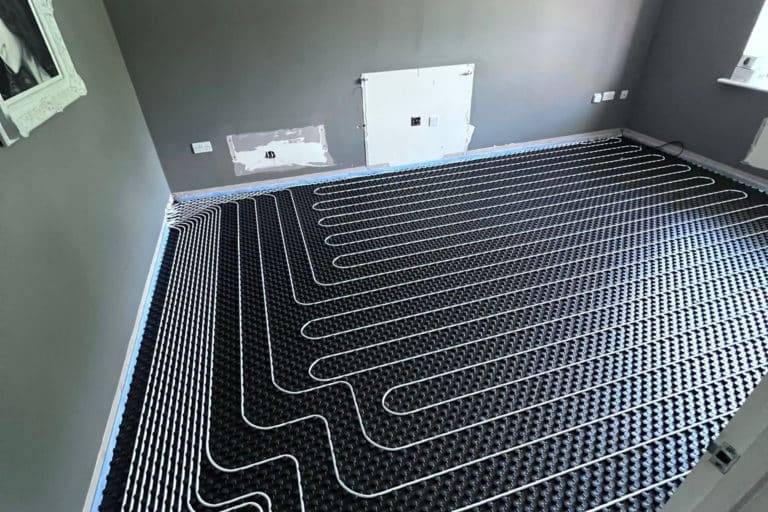With precision design and planning we can accommodate whether you have a solid floor or suspended floor, downstairs or upstairs. There's an option and solution for every aspect of your property.
Get rid of the bulky radiators and consider invisible heating, with less maintenance, less moving parts & all from the comfort of your phone when installed with a Smart thermostat.
With options to have “zones” meaning you can control each floor or each room for maximum control and efficiency.
And the best part? Your pets are going to love it!



Underfloor heating systems use either electric resistance cables or water-filled pipes to generate heat beneath the floor surface. This heat then radiates upward, warming the room evenly from the floor upwards.
Underfloor heating provides several benefits, including more even heat distribution, reduced energy consumption compared to traditional heating systems, improved comfort, and the ability to free up wall space by eliminating the need for radiators.
The cost of installing underfloor heating varies depending on factors such as the type of system, the size of the area to be heated, and whether it's a new build or a retrofit. Generally, it can be more expensive upfront compared to traditional heating systems, but it often pays off in the long run through energy savings and increased property value.
Yes, underfloor heating can be installed in existing homes, but it may require more extensive installation work, particularly if retrofitting into an already finished space. There are different types of systems to accommodate a specific floor however.
Underfloor heating is compatible with various types of flooring, including tile, stone, laminate, engineered wood, and certain types of carpet. However, some flooring materials conduct heat better than others, so it's essential to choose the right type for optimal performance.
Underfloor heating systems typically take longer to warm up compared to traditional radiators, as they rely on thermal mass to heat the floor and then radiate heat into the room. Underfloor heating operates at a lower temperature also. Radiators can generally be hot within 20 minutes whereas underfloor heating usually takes between 30 minutes and 1 hour.
Underfloor heating is suitable for most rooms in a home, including living areas, bedrooms, bathrooms, and kitchens. However, it may not be recommended for areas with heavy furniture or where the floor covering restricts heat transfer, such as thick carpets.
Yes, underfloor heating is compatible with heat pump systems and is considered an efficient combination for heating homes, especially in regions with moderate climates. It is recommended to have UFH rather than radiators with a heat pump.
Yes, underfloor heating is generally more energy-efficient than traditional heating systems because it operates at lower temperatures and distributes heat more evenly, reducing heat loss and energy consumption.
Underfloor heating systems require minimal maintenance. Inspection of the UFH manifold for leaks or damages is suggested. Generally you’ll know if there's an issue with UFH as you’ll have cold feet on some parts.